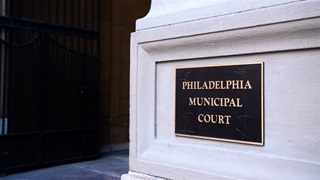Clean Energy Investments in Obama Administration's FY 2015 Budget Proposal
Research, Manufacturing, and Grid Modernization Prioritized
The Department of Energy is one of the few agencies slated for a funding increase in the fiscal year 2015 federal budget proposal, which President Barack Obama unveiled to Congress on Tuesday. The $27.9 billion request is 2.6 percent higher than the fiscal 2014 enacted funding level and includes a 21.9 percent increase for the DOE's core energy efficiency and renewable energy programs.
“The president's budget request signals a strong U.S. commitment to clean energy research, demonstration, and deployment,” said Phyllis Cuttino, director of the clean energy program at The Pew Charitable Trusts. “Pew's research has shown that such investments are essential to America's competitiveness in the global clean energy economy, which is expected to grow to $7 trillion by 2035.”
Summary of Clean Energy Investments
|
The DOE's budget request would provide near-level funding of $5.11 billion for the Office of Science, the single largest federal supporter of basic research in the physical sciences.
A 21.9 percent increase, to $2.3 billion, is proposed for the Office of Energy Efficiency and Renewable Energy (EERE), including additional money for its bioenergy, fuel cell, solar, wind, water, geothermal, and state and tribal energy programs.
In the transportation sector, EERE would make robust investments in the EV Everywhere Grand Challenge, which seeks to reduce costs and improve performance of plug-in electric vehicles, and continue its collaboration with the Navy and Agriculture departments to achieve commercial deployment of drop-in advanced biofuels.
Emphasis on Manufacturing and Advanced Technologies
The proposal includes a 69.1 percent increase, to $305 million, for advanced manufacturing, supporting President Obama's goal of creating 45 institutes under the National Network for Manufacturing Innovation over the next decade. These regional hubs will combine public and private funding to accelerate the development and adoption of cutting-edge manufacturing technologies.
The Advanced Research Projects Agency-Energy (ARPA-E), which provides equity financing in early stage technologies and research and development, would receive $325 million in fiscal 2015, an increase of 16.1 percent. Many ARPA-E investments are matched with private-sector funding.
The two major debt financing programs currently managed by the DOE's Loan Programs Office—the Innovative Technology Loan Guarantee program and the Advanced Technology Vehicles Manufacturing program—are gradually being ramped down as their existing loan authority is exhausted. At least one more solicitation for renewable energy projects will be issued in fiscal 2015.
Cross-Cutting Themes
A number of cross-cutting initiatives are planned for the agency's programs in fiscal 2015. One such initiative would devote a total of $314 million toward grid modernization efforts, including microgrids, energy storage, energy systems integration, and enhanced energy security.
The president's budget proposal also includes $1.5 billion for operational energy investments on U.S. military installations. Along with the DOE budget, these investments in clean energy technologies and energy efficiency help strengthen energy security and reduce costs.
Department of Energy: budget request and related documents, funding opportunities
Fact Sheet: U.S. Leadership in Innovation
Video: Energy Innovation: Cheryl Martin Shares ARPA-E Mission
Pew's Clean Energy Business Network: www.pewtrusts.org/businessnetwork
Report: Power Surge: How the Department of Defense Leverages Private Resources to Enhance Energy Security and Save Money on U.S. Military Bases











